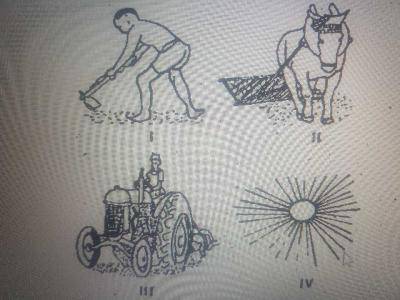
Agricultural Science Questions and Answers
A comprehensive list of Agricultural science questions with answers to help you prepare for JAMB, WAEC, NECO, Post UTME exams.

A comprehensive list of Agricultural science questions with answers to help you prepare for JAMB, WAEC, NECO, Post UTME exams.
The diagrams below illustrate different sources of farm power. Study them and answer the question.

Which of the illustrated sources of farm power is the cheapest?
II
III
IV
I
Correct answer is D
I is the cheapest because it uses crude tool.
Rural-urban migration of farm labour could be prevented by
Increasing the cost of acquiring farmland
Employing more extension agents for farmers
Increasing the size of farmland for cultivation
Establishing agro-based industries in villages
Correct answer is D
stablishing agro-based industries in villages can help prevent rural-urban migration of farm labor by providing additional job opportunities and income sources for the rural population. Agro-based industries are those that process and add value to agricultural products. By setting up such industries in villages, farmers and rural workers can find employment locally, reducing the need to migrate to cities in search of jobs.
Day-neutral crops are crops that produce flowers regardless of
Day length being longer than the length of night
Extremely low temperature
Amount of sunlight received by flowering plants
Extremely high temperature
Correct answer is A
Day-neutral crops, also known as non-photoperiodic crops, are plants that produce flowers independently of the daylength. Unlike short-day and long-day plants, which require specific daylength conditions to flower, day-neutral crops are not influenced by the length of the day or night.
Cotton stainer is an insect pest of
Cotton
Pepper
Okra
Onions
Correct answer is A
The cotton stainer is an insect pest of cotton plants. The cotton stainer is an insect pest that primarily affects cotton plants, causing damage to the seeds and leading to staining of the cotton fibers, impacting cotton yield and fiber quality.
How are farm animals classified based on their feeding habits?
By their reproductive strategies
By their feeding preferences
By their geographical distribution
By their size and weight
Correct answer is B
Farm animals are commonly classified based on their feeding preferences. This classification categorizes animals into different groups based on their dietary habits and the type of feed they consume.